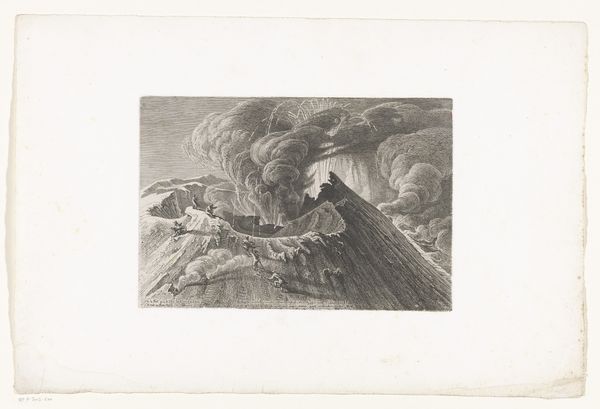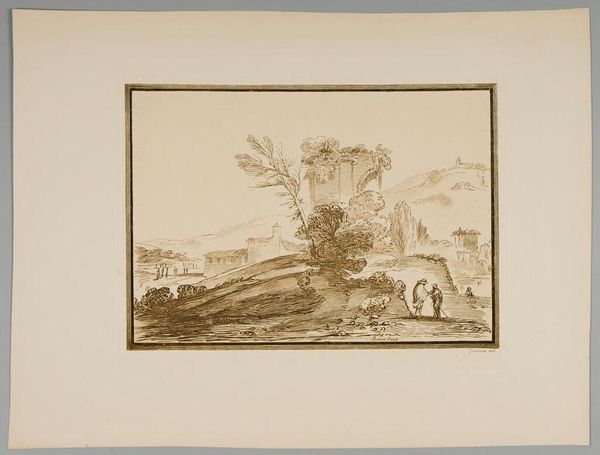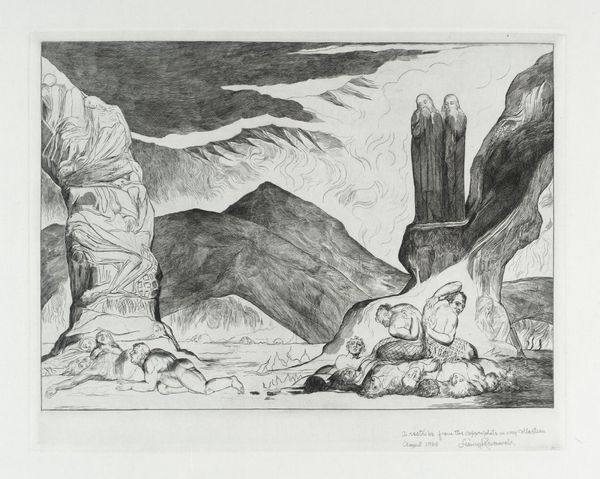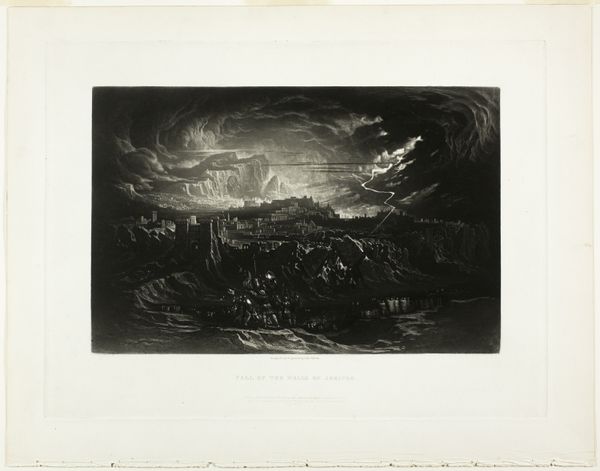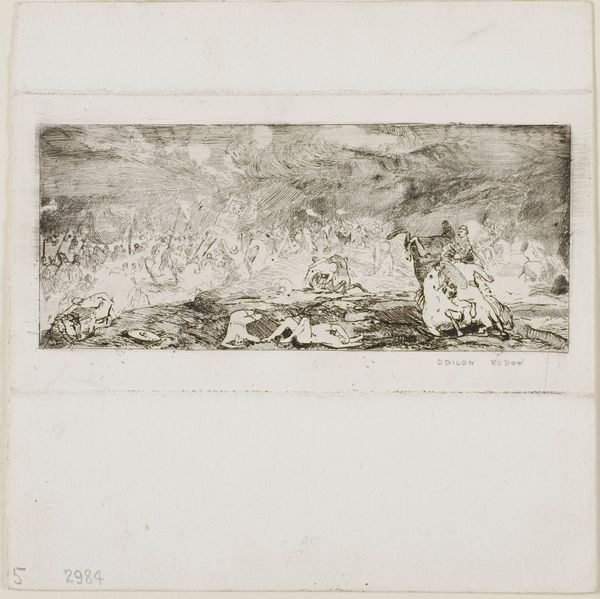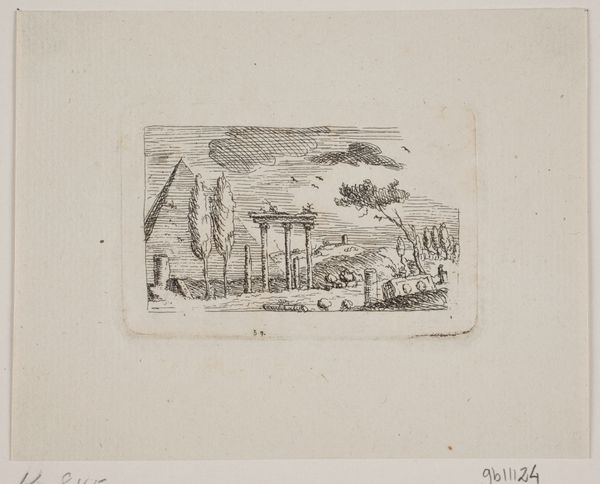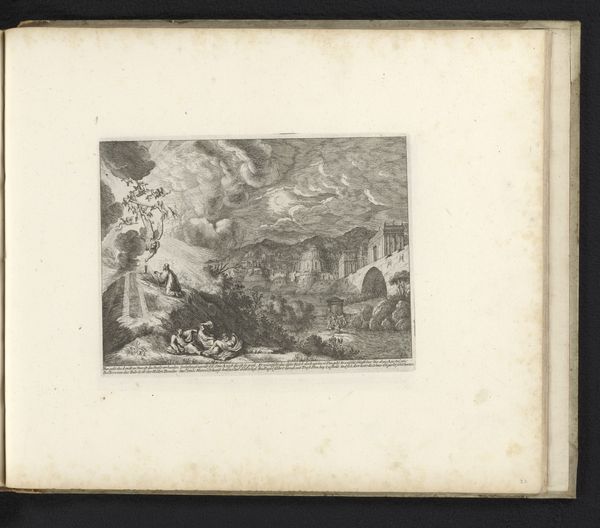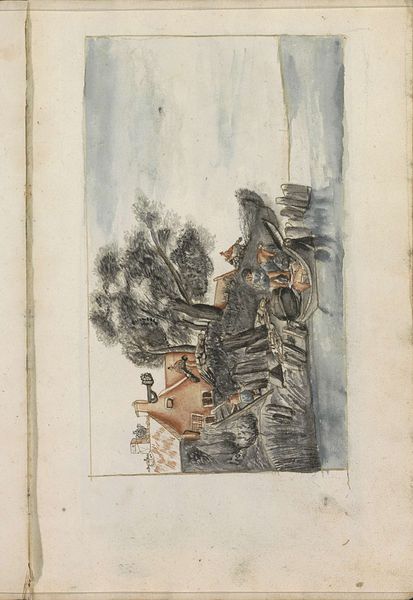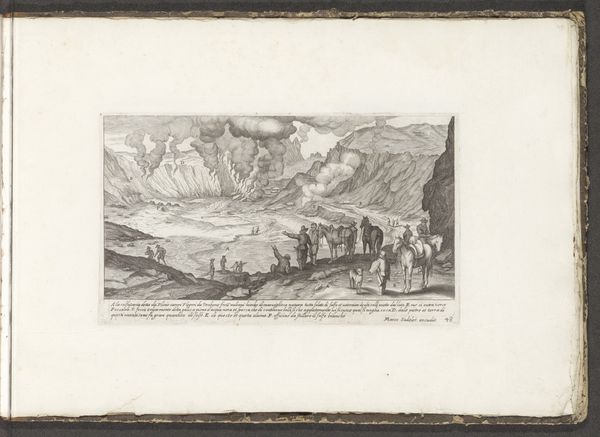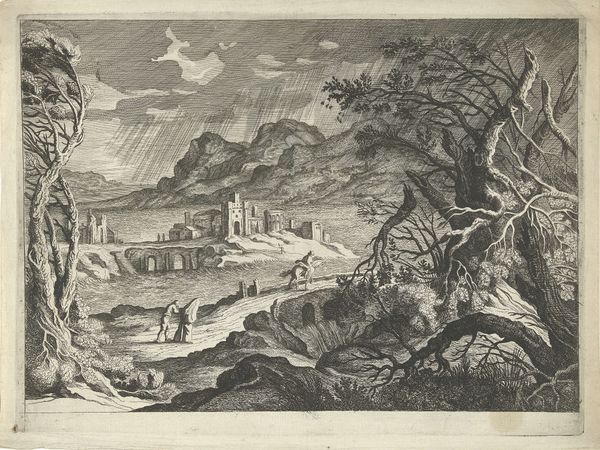
The Circle of the Falsifiers: Dante and Virgil Covering their Noses Because of the Stench. Inferno, canto XXIX c. 1827 - 1892
0:00
0:00
Dimensions: 240 × 338 mm (image); 272 × 354 mm (plate); 394 × 539 mm (sheet)
Copyright: Public Domain
Editor: We’re looking at William Blake's "The Circle of the Falsifiers: Dante and Virgil Covering their Noses Because of the Stench. Inferno, canto XXIX," made with watercolor and ink around 1827-1892. The fiery landscape feels almost oppressive. What strikes you about Blake's representation of hell? Curator: What's interesting to me is how Blake uses watercolor, typically associated with delicacy, to depict this horrific scene. Notice how he layers the washes to create depth, but also a sense of… miasma. Think about the economic conditions, the access to materials, influencing his creative decisions, no doubt impacting the consumption and display of these types of works. Are we looking at a radical reassessment of production, labor, and artistic genius itself? Editor: Miasma... yes, a fitting description. The light reflecting through the translucent paints gives that effect. Is he challenging notions of "high art" by using what would’ve been seen as craft-based materials? Curator: Absolutely. Consider the social context of the time. Blake was critical of industrialization and the commodification of art. His choice of medium and his focus on hand-craftsmanship can be viewed as a form of resistance. How does this act of resistance recontextualize labor? Editor: That's a great point, considering how the original illustrations are hand-printed engravings with watercolor, a craft. So, rather than polished paintings for the elite, we see something far more engaged with labor? Curator: Precisely. We can also explore the political ramifications of portraying falsifiers. What is Blake trying to critique about his society? The ruling classes? Editor: This materialist perspective really shifts how I see this. It’s not just about hell as a religious concept, but a commentary on earthly power structures too! Curator: Indeed. Blake wasn't just illustrating Dante, he was critiquing his own world through the lens of material production. It’s rewarding to find social commentary through examining process and purpose of creation.
Comments
No comments
Be the first to comment and join the conversation on the ultimate creative platform.

